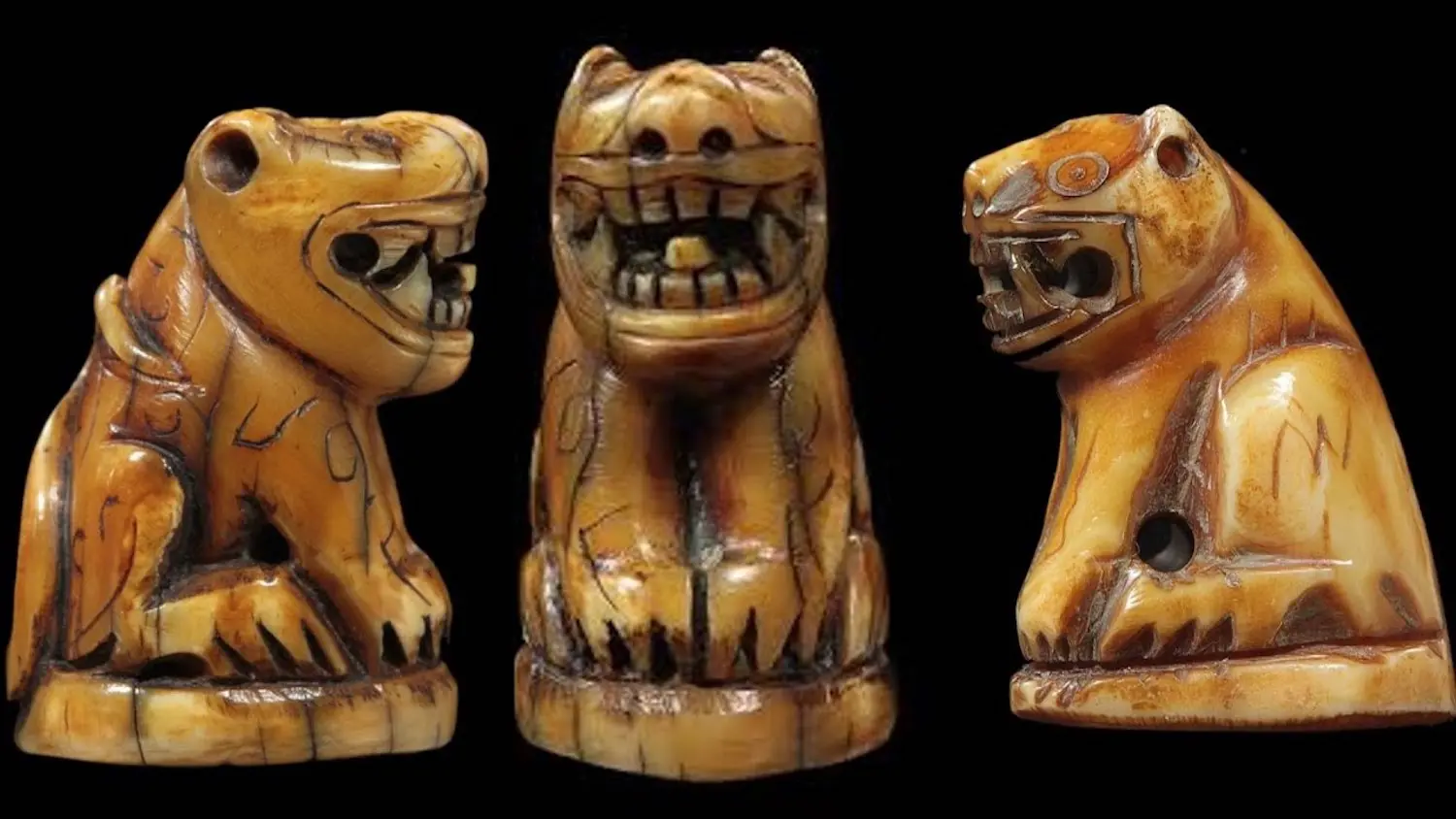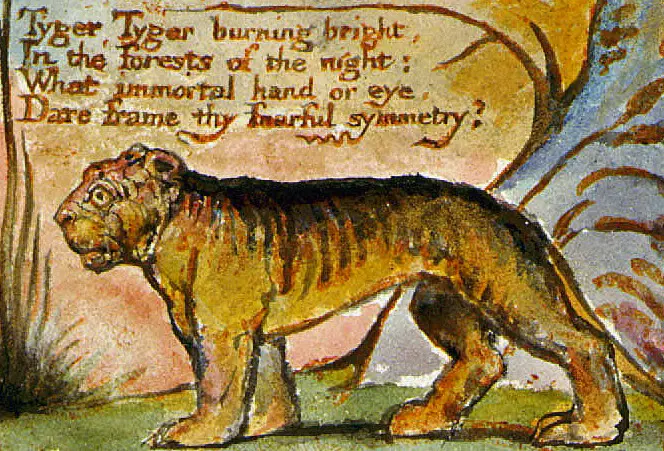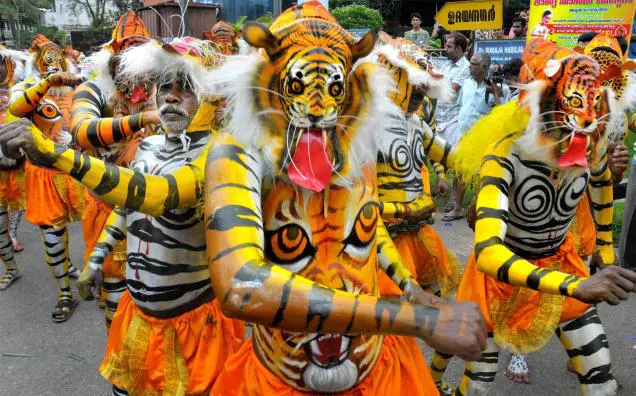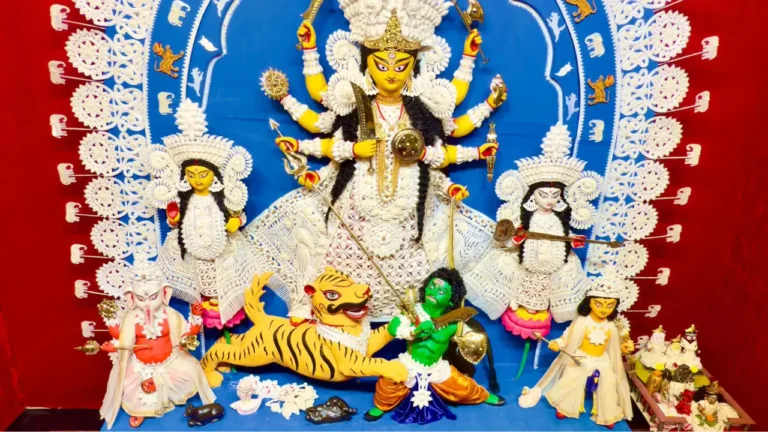Introduction – The Birth of Tiger Culture
Before there was writing, there were stripes. Ancient artists carved tigers on rock faces in China’s Helan Mountains and painted feline silhouettes on cave walls across India and Indonesia. These were not records of hunts—they were declarations of awe. The origins of tiger culture lie in reverence, not rivalry. Long before organized religion, the tiger embodied what humans could neither control nor ignore: power that lived beyond their reach. From that reverence grew myth.
In early Asia, the tiger became a messenger between worlds—the guardian of the dead in Korean tomb art, the protector of the East in Chinese cosmology, and the vanquisher of demons in Hindu legend. As trade expanded, these images traveled with merchants, merging with local beliefs and reshaping identities. By the first millennium, the tiger was no longer just an animal; it was an idea—part fear, part faith. Part of the human culture.
Across centuries, civilizations reinterpreted the tiger to mirror their own transformations. Dynasties adopted it as an emblem of authority; poets used it to measure courage; warriors carried it on banners to borrow its force. Every new empire redrew the tiger’s meaning while the animal itself remained silent. The story of tiger culture is the story of how humanity explained itself through the stripes of another being.
The Mythic Tiger in our Culture: Power, Fear, and Reverence
Every civilization that met the tiger felt the need to explain it. In China’s ancient cosmology, the creature ruled the cardinal directions—the White Tiger of the West balancing the Azure Dragon of the East, its stripes a script written by the heavens. To the early Koreans, it symbolized both mountain spirit and moral virtue, while in Japanese folklore it traveled as an imported myth, representing the impossible made real—a predator admired though it had never lived on the islands. The tiger was never simply an animal; it was a vocabulary for power itself, which is the sole reason why tigers are an integral part of Chinese culture.
In India, it became divine. The goddess Durga rides a tiger into battle, her calm seated above ferocity, embodying balance between chaos and control. In Buddhist lore, the tiger was patience, its hunger transformed into discipline. The same animal could protect a village in one legend and destroy it in another. Its meaning depended not on biology but on need: humans projected virtue and terror in equal measure.

Early tiger culture blurred boundaries between faith and survival. People who feared the jungle also worshipped it; those who hunted the predator sought forgiveness through ritual. In this tension lay the foundation of all later symbolism. The tiger stood where nature met morality, a reminder that strength was both sacred and dangerous. To invoke its name was to admit vulnerability—a confession civilizations repeated for millennia.
The Tiger in Empire and Authority
As kingdoms grew into empires, the tiger culture changed and moved from myth to emblem. Rulers discovered that the animal’s image could rule hearts as effectively as armies. In early Chinese dynasties, generals were granted tiger-shaped tallies—bronze or jade tokens split in half, one side held by the emperor, the other by his commander—to signify delegated power. The tiger thus became the material language of authority, its form legitimizing conquest. In the Korean and Vietnamese courts, its likeness appeared on thrones, banners, and armor, a visual shorthand for courage and command. And what about the many tiger related weapons, army divisions or police squads.
In South Asia, the transformation in culture was even more explicit. The tiger adorned royal seals of the Chola and Gupta empires, roaring from temple walls and palace gates as both guardian and warning. By the Mughal era, the animal symbolized imperial control over chaos—its hunted body displayed in miniature paintings and court chronicles. Later, during the Maratha and Mysore reigns, the tiger’s meaning turned defiant: Tipu Sultan, “the Tiger of Mysore,” used it to challenge British rule, carving its jaws into weapon hilts and designing a mechanical tiger mauling a European soldier as political theater.

Such imagery reveals how tiger culture evolved alongside power. The stripes that once frightened villagers became insignia for emperors. Fear was domesticated into authority, and reverence became propaganda. Each empire claimed the tiger as proof of its destiny, forgetting that the real animal still roamed beyond its borders—answerable to no throne, loyal to no flag. And certainly not to a human culture.
The Tiger in Faith and Ritual
Long before the tiger entered palaces, it lived in shrines. Across Asia, worshippers shaped its image from clay, bronze, and wood, placing it beside ancestors and deities as a guardian between the human and the divine. In India’s forests, tribal communities offered rice, flowers, and blood to tiger spirits believed to protect hunters from misfortune. Among the Bhil, Gond, and Santhal peoples, these rituals in culture were acts of negotiation rather than devotion—a respectful truce with the most unpredictable neighbor in the forest.
In Chinese temples, tiger statues guarded entrances as symbols of protection and cosmic order. Taoist priests invoked its power to banish evil, while in Tibetan Buddhism, the tiger skin became a symbol of mastery over base instincts, worn by yogis who claimed victory over fear itself. Southeast Asia carried these beliefs further: in Thailand and Malaysia, amulets carved with tiger teeth or claws were thought to grant invincibility, even though belief often justified poaching. Culture is just more powerful than laws.

In Japan, where no wild tigers existed, priests imported the mythology within their culture. By the Heian period, painted tigers prowled temple scrolls as embodiments of strength and vigilance. The creature’s absence made it sacred; imagination filled the void geography had left. Through these layered traditions, tiger culture shaped the moral architecture of faith—turning an apex predator into an instrument of discipline, courage, and spiritual endurance. The same creature that ruled the jungle became a teacher of control, reminding believers that divinity often borrows its voice from what humanity fears most.
The Tiger in Art and Aesthetics
No other predator has inspired such a long and varied visual tradition. The earliest known depictions of tigers in East Asia appear on Neolithic pottery and Bronze Age drums—abstractions of power rendered in swirling lines. By the Tang and Song dynasties, Chinese artists had transformed those patterns into lifelike forms. Brushwork captured muscle and motion, ink strokes echoing the rhythm of a heartbeat. Painters like Zhang Sengyou and later Ma Yuan treated the tiger as both subject and spirit—its body a study of anatomy, its presence a lesson in restraint.
In Korea’s Joseon era, folk painters created the minhwa tigers—awkward, almost comic, yet profoundly symbolic. Their exaggerated faces stared down at magpies perched in trees, representing humor triumphing over hierarchy: the commoner’s tiger mocking authority. In Japan, the animal entered ukiyo-e prints through Chinese influence. Artists who had never seen one painted from imported sketches or pelts, creating a mythical hybrid that merged imagination with imitation. The tiger became art’s most persuasive ghost.
In South and Southeast Asia, stone reliefs of tigers guarded temples, their snarling faces carved into lintels and walls. Mughal miniatures portrayed royal hunts in exquisite cruelty, gilding domination into decoration. Across centuries, tiger culture evolved with each brushstroke and chisel cut—translating fear into beauty, wilderness into discipline. Every depiction was an attempt to understand the ungovernable, to domesticate awe without extinguishing it. The gallery of history reveals that humankind painted tigers not to remember them, but to contain them, making it a valuable part of human culture.
The Tiger in Literature and Storytelling
Words have carried the tiger farther than any forest ever could. In the oldest Sanskrit texts, it prowls through hymns and epics as a measure of valor and warning—the emblem of kings, the nemesis of arrogance. The Mahabharata likens warriors to tigers when courage borders on ferocity; Chinese chronicles describe poets who “write with tiger bones,” meaning strength without mercy. Across languages, the tiger became a literary shorthand for raw energy shaped by discipline.
By the medieval period, it had moved from myth to moral. Persian poets used it to explore fate and restraint; in Indian folktales, tigers alternated between cunning villains and reluctant teachers. Korean fables cast them as foolish yet lovable, moralizing that even power must bow to wisdom. In Western literature, the tiger arrived as the stranger from the East—an image of exotic fear—until William Blake’s “The Tyger” turned it into theology, asking what kind of creator could forge beauty from danger. The poem immortalized both creature and contradiction, making wonder itself an act of faith. The tiger got even more entangled in the human culture.

Colonial writers later transformed the tiger into narrative proof of empire. British memoirs and novels portrayed the hunt as civilization triumphing over savagery, converting blood into literature. Yet even in those pages, awe survived beneath arrogance. Tiger culture in storytelling reveals not only admiration but projection: each tale reshaped the animal into what its author feared or desired. The tiger endured as metaphor because imagination proved a safer habitat than wilderness.
The Tiger in Nationalism and Identity
When colonial borders divided landscapes, the tiger became a flag. Its image moved from the jungle to the front line of political identity, symbolizing strength reclaimed and pride restored. In India, the nationalist press of the early 20th century used the tiger to personify resistance against the British lion. Political cartoons showed the tiger fighting back, reclaiming its dignity after decades of humiliation, bringing nationalism into tiger culture. After independence, it was adopted officially—emblazoned on emblems, postage stamps, and posters as the country’s living emblem of self-rule.
In Southeast Asia, the pattern repeated. Malaysia chose the tiger as the guardian of its national coat of arms, two golden beasts supporting the shield of the federation. In Bangladesh, the Bengal tiger became a metaphor for resilience during the liberation war, invoked in poetry and propaganda alike. In Korea and China, it reemerged as a symbol of heritage and regional unity, surviving shifts in ideology and empire.
The tiger thus crossed from mythology into modernity without losing its aura, nor its place in culture. Its authority became political currency. Rulers who once hunted it now claimed to protect it, and nations that once feared it began to market it as national pride. Tiger culture transformed from reverence to rhetoric—a reminder that symbols live longer than species. The animal that once embodied the natural world’s power now stands for human aspiration, drafted into service as both mascot and memory of the freedom we took from it.
The Tiger in Colonial Imagination
When the British arrived in India, they met the tiger not as symbol but as obstacle. To the empire, the animal represented the wildness that had to be conquered for order to prevail. Hunters turned that confrontation into ritual, their memoirs and photographs documenting both domination and desire. In colonial art, tigers became theater props—creatures that justified power by embodying resistance. The hunt was spectacle, and the spectacle was proof of control. Images of officers posing beside carcasses circulated through newspapers and illustrated books, transforming cruelty into courage.
Yet beneath this propaganda, fascination persisted. The tiger haunted imperial culture as a paradox—feared for its ferocity, admired for its independence. British writers described it in tones reserved for rival generals, as if killing it meant inheriting its strength. One of the most striking artifacts of this obsession was Tipu Sultan’s mechanical tiger, seized after his death and displayed in London: a wooden automaton of a tiger mauling a European soldier. Intended as defiance, it was repurposed as trophy, bringing yet another aspect to the tiger culture.
In literature and painting, the colonial gaze turned the tiger into the exotic other—the embodiment of lands to be ruled and instincts to be suppressed. Tiger culture during this era reveals how empire fed on imagery as much as on territory. The predator was not just hunted—it was branded, aestheticized, and exported as evidence that civilization had triumphed. In truth, what the empire subdued was its own reflection.
The Tiger in Western Art and Imagination
When the tiger reached Europe, it arrived as myth reborn. Medieval bestiaries described it as a beast so fast that hunters could only deceive it by dropping a mirror, whereupon it stopped to admire its reflection—a story that said more about human vanity than animal speed. The Renaissance rediscovered the tiger through travelogues and trade, painters sketching from imported pelts or caged captives brought to royal courts. Rubens and Delacroix filled their canvases with lunging tigers, bodies stretched in violent grace, symbols of passion restrained by artistry. In these works, nature’s chaos became a stage for human genius.
During the Enlightenment, the tiger symbolized the raw energy that civilization sought to discipline. It roared through Romantic poetry as the embodiment of the sublime: beauty that frightened precisely because it was untamed. As zoos appeared in European capitals, the wild was turned into weekend spectacle. The same societies that celebrated freedom in art confined it in cages.
By the 19th century, tiger culture in the West had fused exoticism with morality. The animal became shorthand for instinct, sexuality, and forbidden desire—a creature that reminded industrial society of what it had buried under progress. Painters, writers, and philosophers projected rebellion onto its stripes, using the tiger as metaphor for everything civilization wanted and feared. It stood as both muse and mirror: a living reminder that humanity’s appetite for control always hides an older hunger for the wild.
The Tiger in Modern Art and Design
The 20th century remade the tiger yet again—this time through the lens of modernism, propaganda, and consumerism. As nations industrialized, the animal’s image was stripped of mystery and repurposed for identity and commerce. Early political posters across Asia used its form to evoke energy, revolution, and renewal. In Mao-era China, stylized tigers symbolized strength through discipline; in Japan, avant-garde painters fused traditional ink with abstract geometry to reinvent ancient power for an industrial age. Artists no longer depicted the jungle—they depicted what it meant to lose it.

Then came the corporate takeover. By mid-century, tiger culture had entered advertising. Gasoline, beer, rice, and even breakfast cereal claimed the tiger’s ferocity to sell speed and confidence. “Put a tiger in your tank,” promised Exxon; Kellogg’s Tony the Tiger taught children that power could be playful. In India, airlines and sports teams followed, adopting the stripes once feared in forests as friendly logos for modern ambition. The transformation was complete: the tiger became capitalism’s favorite disguise for vitality.
Yet modern art also fought back. From Bengal’s woodcut revival to Indonesia’s protest murals, painters used the tiger to critique exploitation and loss. The creature’s gaze became that of witness rather than prey. Through it, artists mourned what progress devoured. In museums and billboards alike, the tiger survived as pattern and prophecy—proof that the wild, even when commodified, still refuses to disappear quietly.
The Tiger in Memory and Heritage
Today, the tiger exists as much in memory as in motion. What began as myth and evolved into empire, art, and advertisement now lingers as heritage—a cultural echo that outlived its source. In temples, scrolls, and folktales, its image endures as evidence of what once roamed freely. Nations curate tiger culture in museums and festivals, showcasing costumes, dances, and relics that recall its symbolic strength. Yet behind the celebration lies an unspoken mourning: the awareness that we preserve the image because we have lost the presence.
Across Asia, rituals once meant to protect forests now perform nostalgia. The Korean Sansingak shrines still feature guardian tigers, but most worshippers have never seen one. In India, the mask dances of Odisha and Bengal reenact power through choreography rather than encounter. The tiger’s survival in heritage proves humanity’s instinct to commemorate what it destroys. We build myths to replace the silence left behind.

Still, heritage carries hope. Cultural memory can teach where policy fails. Reviving old stories with honesty—not as legends of dominance but as lessons of coexistence—may yet restore meaning to the symbol. The tiger began as our teacher; its memory remains our conscience. Every artifact, every dance, every carving reminds us that imagination was once an act of respect. To honor that truth is to keep the door open for the living animal to return.
Outro – The Imagination That Made the Tiger Immortal
The tiger’s journey through human history is one of transformation and betrayal. What began as reverence became representation; what began as encounter became echo. Across time, tiger culture has followed civilization’s path—from awe to appropriation, from worship to branding. Yet in that long descent lies a deeper truth: the animal survived in imagination because we could not bear to forget it. Every temple mural, royal emblem, or advertising slogan is an admission that humanity still measures itself against the wild.
In myth, the tiger was divine; in empire, it was power; in art, it was beauty; in commerce, it became desire. Each era claimed the animal and lost a part of its meaning. But even when reduced to symbol, the tiger retained its defiance. It remains untranslatable—too ancient to be owned, too enduring to be erased.
Understanding tiger culture is not nostalgia; it is diagnosis. The stories we tell in our culture reveal the boundaries we crossed. To study them is to face the paradox of admiration without accountability. The tiger’s immortality in art is our confession of guilt in nature. Yet it also offers redemption. Imagination, once used to dominate, can be used to remember differently—to restore wonder as responsibility. The tiger lives in our myths because we once needed it to explain the world.
We need it again now, to remind us what a world with it still means.
Sources:
UNESCO: Intangible Cultural Heritage of Asia
The British Museum: Art of the Tiger in Empire and Myth (keyword = tiger)
Oxford Research Encyclopedia of Religion: Animal Symbolism and Sacred Power






